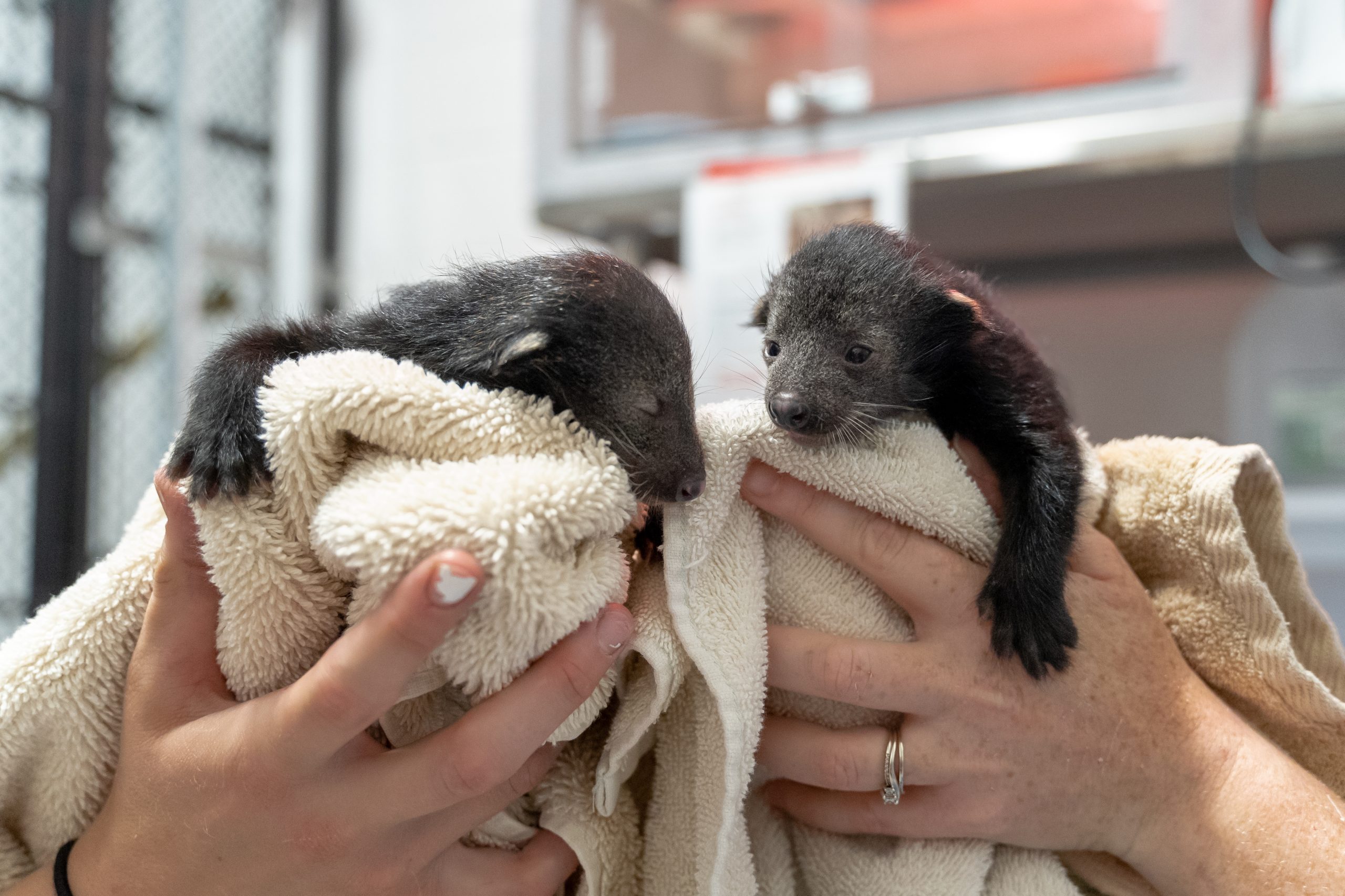Summary of Greensboro Science Center Welcomes Bintlets:
The Greensboro Science Center in North Carolina has announced the birth of two binturongs, also known as billets. The billets were born on May 5, 2023, and are the first to be born at the center. They are being hand-reared by the center’s animal care team and are not yet visible to the public. The center will provide updates on their progress through social media. Binturongs, or bearcats, are carnivores but primarily eat fruits and berries. They are native to the rainforests of South and Southeast Asia and are considered vulnerable by the IUCN Red List. The birth of the billets is seen as a success for conservation efforts.
Summary:
– The Greensboro Science Center (GSC) is excited to announce the birth of two binturongs, also known as billets.
– The billets were born on May 5, 2023, and are the first billet births at the GSC.
– Binturongs are a vulnerable species native to South and Southeast Asia.
– The GSC’s breeding program helps strengthen the sustainability of this species.
– The billets are being hand-reared by the GSC’s animal care team.
The Greensboro Science Center (GSC) is thrilled to share some exciting news – the birth of two adorable binturongs, or billets as we call them! Born on May 5, 2023, these billets are the first of their kind at the GSC, making their arrival an extra special occasion.
Binturongs, or bearcats, are fascinating creatures belonging to the family Viverridae. Despite their name, they are neither bears nor cats. These carnivores have a unique feature – a prehensile tail, which allows them to grasp and hold onto branches as they move through the trees. Binturongs are one of only two carnivorous species with this tail adaptation.
Unlike their carnivorous nature suggests, binturongs primarily feed on fruits and berries. They have a diverse palate and are crucial seed dispersers in the rainforests of South and Southeast Asia, where they are native. These remarkable animals play a vital role in maintaining the ecosystem’s balance through feeding habits.
Sadly, binturongs are currently considered a vulnerable species according to the IUCN Red List. Their population has declined over the past few decades, making their successful breeding and conservation efforts all the more crucial. That’s where the GSC’s breeding program, in collaboration with the Association of Zoos and Aquariums (AZA) Species Survival Plan® (SSP) Program, comes into play.
Susan and Mee-Noi, the proud parents of the billets, were recommended for breeding by the AZA SSP. This pairing is significant because, historically, binturong births have been relatively uncommon among AZA facilities. The population of binturongs has been on a downward trend, arriving these billets an important milestone for their conservation.
Jessica Hoffman, the VP of Animal Care and Welfare at GSC, expresses her excitement about the billet’s birth, stating that only a handful of pairs have been successful in breeding binturongs in recent years. With five binturong births occurring in the last year throughout AZA, the sustainability of this beloved species is strengthened.
Though the billets are not currently visible to the public, they receive exceptional care from the GSC’s dedicated animal care team. Hand-rearing the billets behind the scenes ensures they receive the attention and nourishment necessary for healthy development. While we understand everyone’s eagerness to meet the billets, we’ll keep everyone updated on their progress through our social media platforms.
The GSC would also like to thank Chris and Cathy Evans, generous binturong donors who made this breeding program and the birth of the billets possible. Their support is invaluable in our mission to protect and conserve these unique and wonderful creatures.
Glenn Dobrogosz, the GSC’s CEO, emphasizes raising awareness about the eroding freedoms of life in the wild. Revolution Ridge, the GSC’s initiative, aims to revolutionize thinking and increase public awareness about modern conservation efforts. AZA-accredited institutions like the GSC serve as educational windows into wildlife preservation and the critical role of successful breeding programs for rare species.
In conclusion, the birth of these billets is a cause for celebration at the Greensboro Science Center. Not only do they bring joy to visitors and staff alike, but their arrival also serves as a significant milestone in conserving these extraordinary creatures. The GSC’s dedication to breeding programs and partnerships with organizations like the AZA contribute to the sustainability and future of binturongs, ensuring that generations can appreciate and learn from these marvelous animals.
If you’re as excited about the billets as we are, follow us on social media for updates and more fascinating insights into the wildlife and conservation efforts at the Greensboro Science Center. Together, we can make a difference in saving vulnerable species and preserving the beauty of our natural world.


